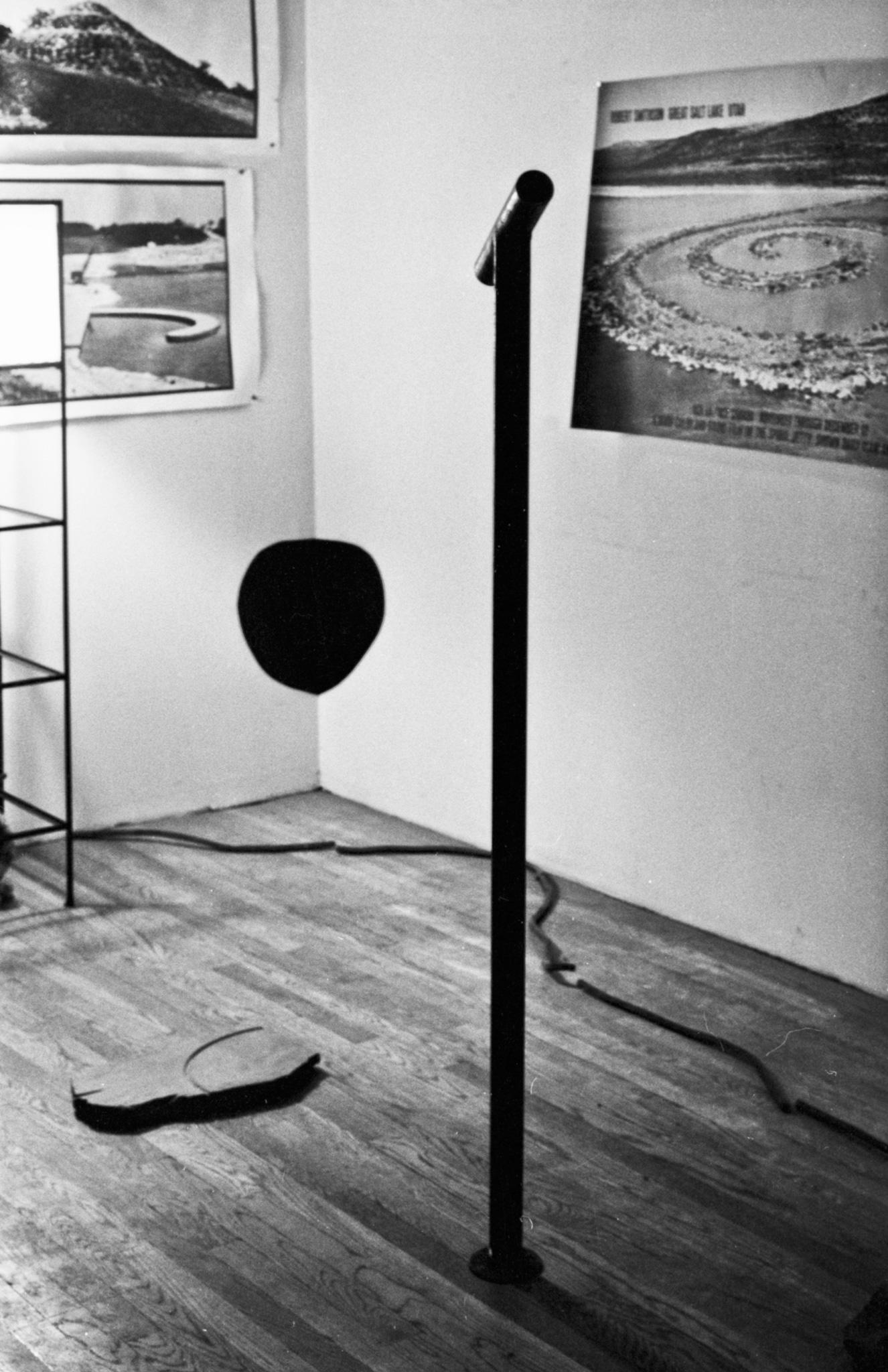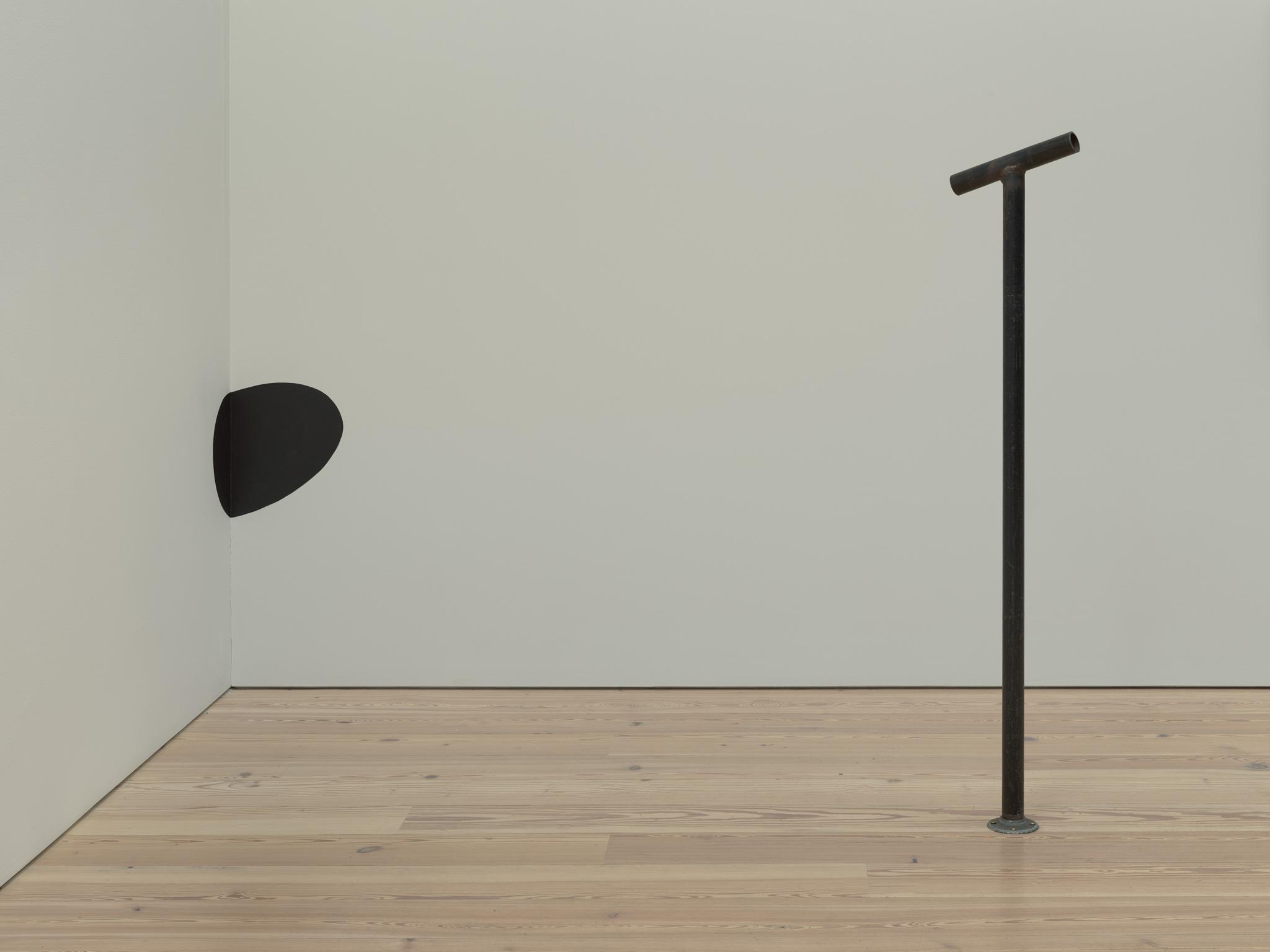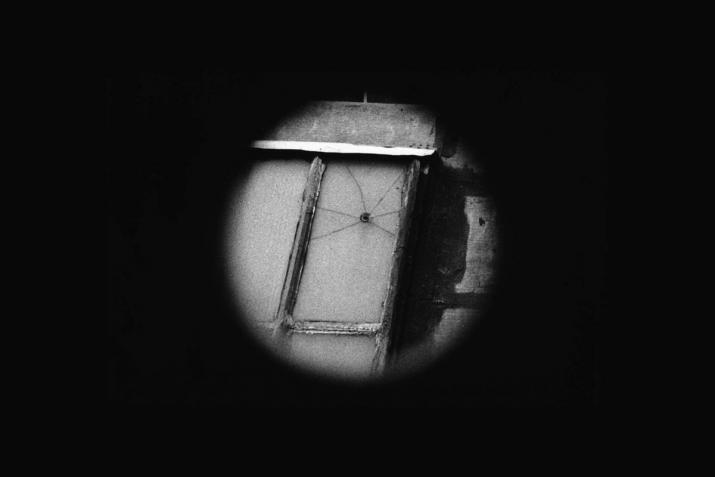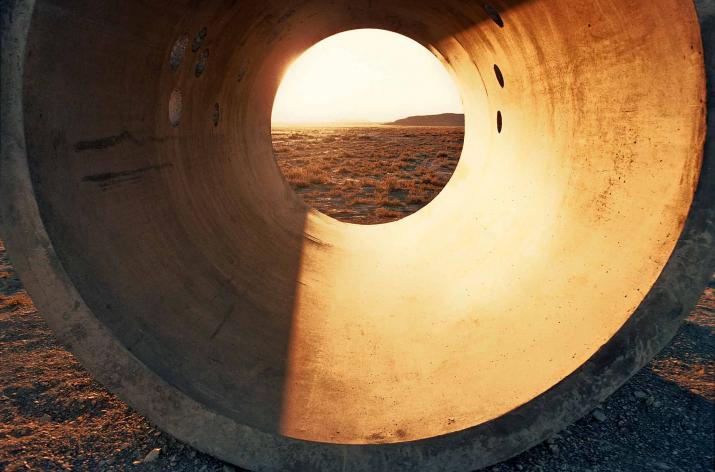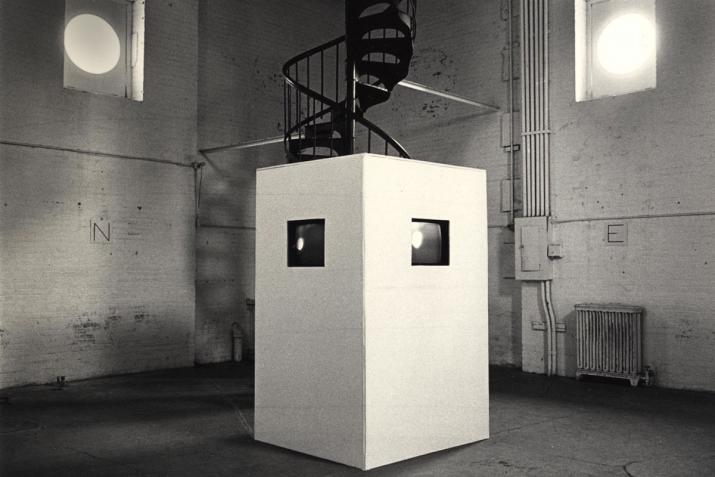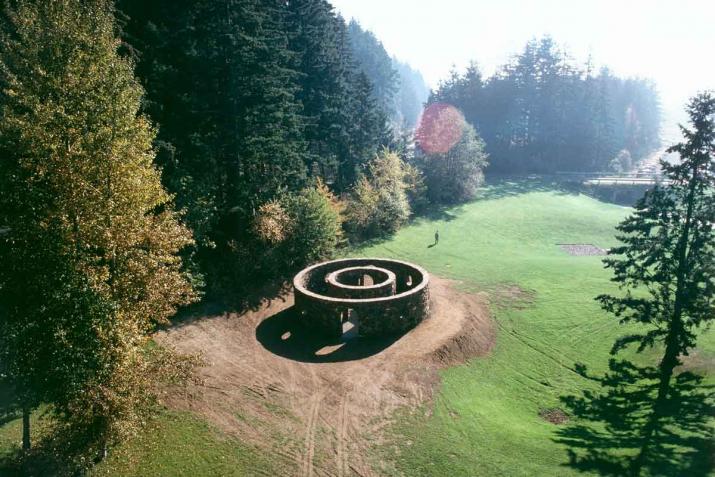Steel pipe, black paint
60 5/16 × 11 7/8 × 2 in. (153.2 × 30.2 × 5 cm)
Collection Whitney Museum of American Art, New York; gift of the Estate of Robert Smithson from the Robert Smithson Collection
© Holt/Smithson Foundation / Licensed by Artists Rights Society, New York
Installed in the shared studio space of Nancy Holt and Robert Smithson's loft in New York City, Locator (Studio Corner) is one of the earliest Locator works that Holt created, and the first that solely engaged interior space. In contrast to other early Locator works that Holt created in her studio—which concentrated vision on preexisting details in the built environment outside Holt's studio window—Locator (Studio Corner) focuses vision on a black shape that Holt painted in the corner of the room. When looking through the Locator, the painted shape in the corner of the room transforms into a perfect circle with a halo of light surrounding it, framed by the circular steel pipe: effectively flattening three dimensional space and reframing the viewers understanding of the shape on the wall. Holt would later refer to these painted or drawn shapes as "loci" and would go on to use this technique in other Locator works, such as Locator P.S.1 .
The image of Locator (Studio Corner) provides a glimpse into Holt and Smithson's life together in their shared New York City loft. On the walls are images of earthworks Smithson had recently completed: Broken Circle / Spiral Hill (left) and a poster of Spiral Jetty (right) featuring an image taken by Gianfranco Gorgoni. On the floor to the left of the Locator is one of Smithson's Slate Grind sculptures (ca. 1971) and snaking through the image on the right is a work in Nancy Holt's personal collection: Carl Andre's Five Steel Run (1970).

